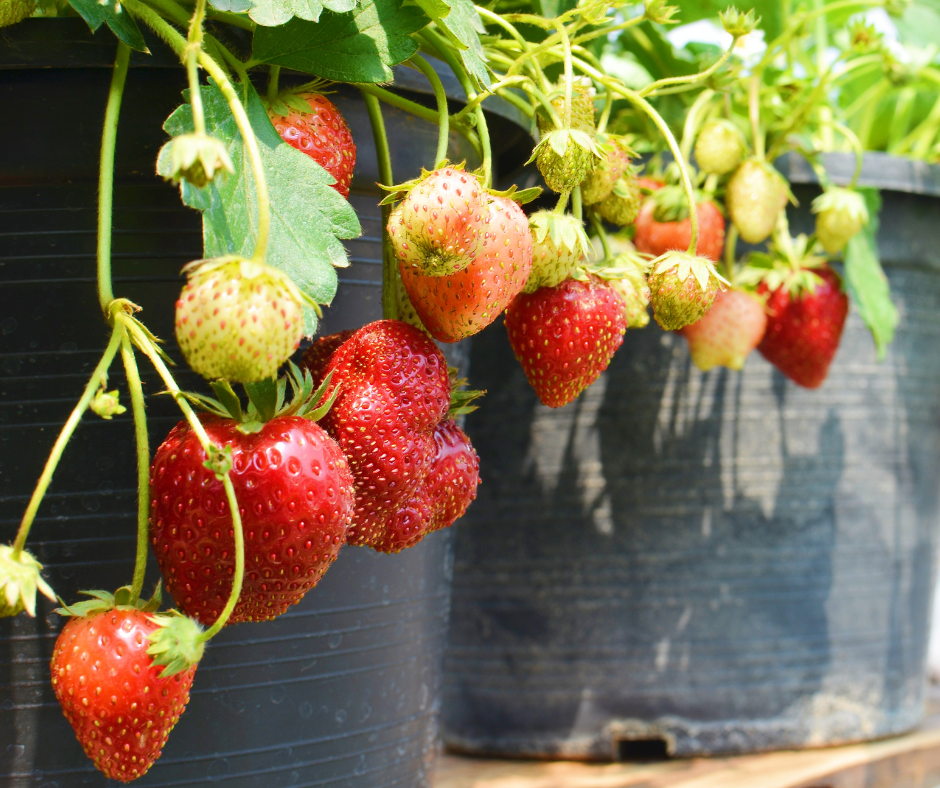Gardner 2 Gardner: Plan for a spring that is “berry” good

You have probably made your seed orders by now. But did you look through the entire catalog?
Often people start thinking about adding strawberries in June when they are bountiful at the grocery store. But just like with spring blooming bulbs, when tulips are in bloom isn’t the time to think about planting them. Now is the time to think strawberry purchasing for planting in early spring.
There is nothing like a fresh-picked, perfectly ripe strawberry picked from your own backyard. There are even varieties now that are bred for hanging basket and containers. Growing strawberries requires some basic knowledge, but isn’t as complicated as it looks when you are googling around for information.
For home growing, strawberries are best started as plants (with one exception, alpine strawberries — more on that later.) There are three types of strawberries that are categorized by their production habit.
June bearing. I am sure it will be no surprise that these plants produce a large crop in … you guessed it … June – well, mid-June into July, depending on the weather Mother Nature throws at us.
June bearing are further classified into early-, mid- and late-season varieties. Think about what you plan to use your strawberries for. Fresh eating? Then you might want to choose some of each variety to have fresh strawberries for a longer time.
If your focus is growing strawberries to preserve them into delicious jelly, jams or preserves, then you might want to choose one category of ripening times, so you have a large number of berries ready all at once. June bearing strawberry plants, when properly tended, can last three to six years. June bearing varieties produce flowers, fruits and runners.
Then there are the varieties called everbearing. They produce crops three times — spring, summer and fall. They do not produce many runners and should be replaced every other year.
Then there are the day-neutral varieties. Day-neutral varieties produce fruit throughout the growing season and produce a few runners. If you have limited space, the everbearing and day- neutral varieties are great choices.
Now is the time to order strawberry plants. And mail order/online is a great way to find the greatest number of varieties, and usually the healthiest and most inexpensive options.
That is not to say that I haven’t purchased the plastic-bagged, boxes big box store fruit — sadly trying to grow out of the box they have been in for months in a too-hot store without water — I certainly have. But as you can imagine, the odds of success are worse of course, because those deprived plants have had a rough start.
Now onto planting. Strawberries, like any other food plant that we eat the results of flowering and pollination, aka the fruit, need to be in a full sun situation. That means 6-8 hours of direct sun. People always ask me if they have less sun situations, can they still grow a sun plant (for food), the answer is yes, but less sun equals less flowers, therefore, less fruit.
That is why the option of growing strawberries in containers is a great one. Even with a little spot of full sun, you can position that container there and still grow your own strawberries.
You should plant your strawberries as soon as the ground is workable in the spring to give them a good start to root development while it is cool and spring moisture is high.
But beware! Strawberries are subject to kill with early spring frosts. That happened to me last year. I eagerly uncovered my favorite strawberry plantings, Mara de bois, too prematurely after a series nice “false spring” days. Then we had a couple of those cold dips into the teens, and I didn’t cover them up with protective mulch.
So learn a lesson from my error, and even when you are planting your berries for the first time, keep a nice shroud of mulch nearby to cover them if temperatures dip.
Strawberries are a curious little plant. The main plant is called the “mother,” and she sends off above-ground runners called stolons. Think of it as a plant umbilical cord, where at the end the produce “daughter” plants. Once the daughter plants start to send out roots that make contact with soil, they will start to root themselves.
Planting depth is key with strawberries. You should plant them so the crown is at ground level at the soil line. Deeper, and the plant will struggle to start; too shallow, and the roots will be exposed to the elements and stress the plant.
The way you plant strawberries is dictated by the type. June bearing are planted in a matted row. In this system, the strawberry plants should be set eighteen to thirty inches apart in rows three to four feet apart. Daughter plants are allowed to root freely to become a matted row no wider than two feet.
For the day neutral and everbearing strawberries, a hilled system is recommended. In this system, all the runners are removed so only the original mother plant remains. Multiple rows are arranged in groups of two, three or four plants, with a two-foot walkway between each group of rows. Plants are set about one foot apart in multiple rows.
One more tip: Remove those first flowers so the plants focus on putting their energy into getting established. For June bearing plants, remove flowers as soon as they appear. For day neutral and everbearing varieties, remove blossoms until the end of June.
Soon you will have a bountiful strawberry harvest, with a full, rich flavor that you can take from garden gate to dessert plate.
There is nothing better!

Using straw as mulch for strawberries helps to keep the weeds down and can be a quick protector when spring temps dip too low.
